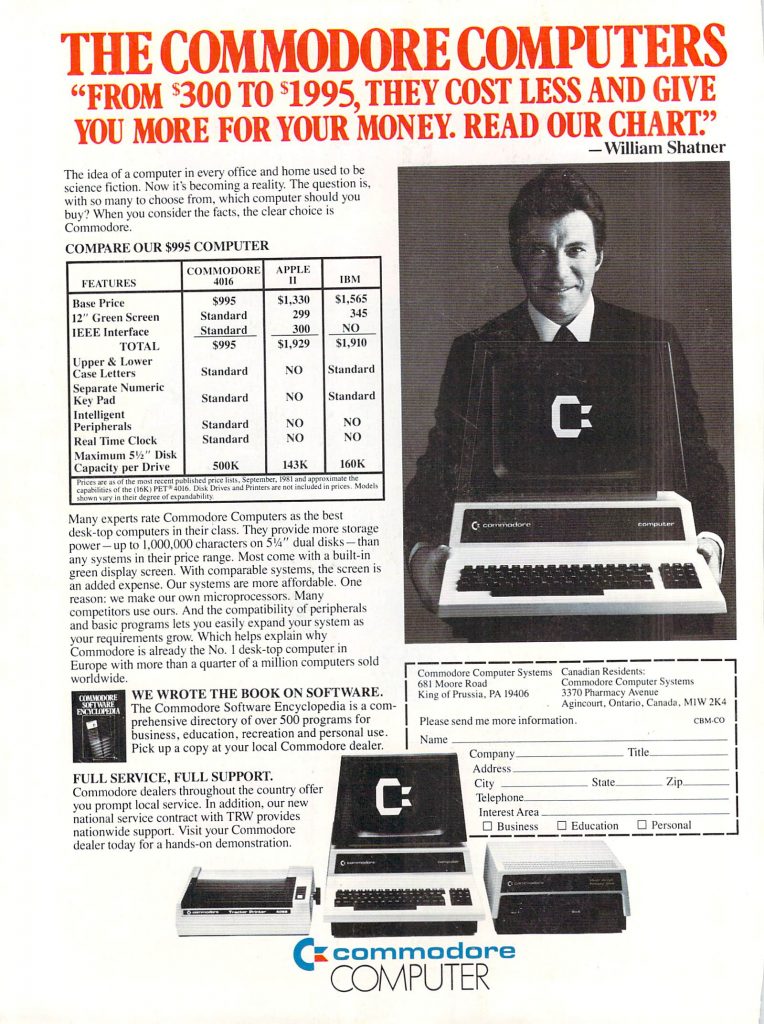Source: Compute! – Issue Number 20 – January 1982
Compute!, at least in its earlier days, exclusively covered computers based on the 6502 CPU. In early 1982 these included the Commodore PET, Apple II, Atari 8-bit, VIC-20, and others. The January 1982 issue includes:
Columns
- The Editor’s Notes – Atari goes after creators of Atari game clones.
- Ask The Readers – Questions asked and answerd about chaining programs in BASIC on Commodore computers, the future of the 6502, software protection, accessing all 48K of RAM on the Atari, and more.
- Computers And Society – An article on the Turing test and measuring artificial intelligence.
- The Beginner’s: Loops – A look at FOR loops, nesting loops and more in BASIC.
- New Products – A new dental computer newsletter, new Atari software from Artworx, Cimarron releases CMAR file handling system for Commodore computers, and more.
Applications
- INVEST – A BASIC type-in program for helping you to calculate various things with regards to realestate investing.
- Developing A Business Algorithm – Creating a program to perform various business calculations including things like interest, lease calculations, taxes, and more.
- Anti-Hesitation Programming: A Tutorial on Arrays – Getting around slowness when using arrays in Microsoft BASIC.
- How Random Are Sequences Of Random Numbers? – A look at the randomness of numbers generating using RND in BASIC.
- Telecommunications: Getting Outside The Computer – A look at the computer parts and peripherals that let you communicate with the outside world. These include things such as the UART and MODEM.
Education
- Friends Of The Turtle – A new society with the goal of promoting turtle graphics with languages such as Atari PILOT, TI LOGO, and Apple LOGO.
- Learning With Computers – A look at how computers might change schools in the future.
The Apple Gazette
- Apple Addresses – Hexadecimal and decimal addressing on the Apple II.
- More Apple Hi-Res Shape Writer – A type-in program for creating hi-res shapes on the Apple II.
- Lower Case With Unmodified Apple – A program that allow you to use lower case letters without hardware modification on the Apple II.
- COMPUTE! Overview: Individual Tax Plan – A look at a program that helps you prepare your taxes on the Apple II.
The Atari Gazette
- Cryptogram – A type-in game for Atari 8-bit computers in which you mus decipher the code.
- SuperFont – A type-in program for the Atari that allows you to create your own fonts.
- Word Search – A type-in program for the Atari that allows you to create word search games.
- Review: Screen Printer Interface (Version 2.0) – A review of this device for Atari computers that lets you capture and print the contents of your screen.
- INSIGHT: Atari – Part three of a series on the Atari operating system. This part covers Atari I/O device handlers.
The OSI Gazette
- Part I: A Small Operating System: OS65D The Disk Routines – Part one of a two part series on using a disk drive with the OSI.
The PET Gazette
- A Yuletide Tale – A Christmas Carol starring the PET.
- Renumbering An Appended Routine Only – A guide to appending one program to another on the PET.
- BRANCH NEVER And QUIF Assembling On SuperPET – Assembly language programming on the SuperPET (which uses a 6809 CPU).
- PET Repairs For The Amateur – A guide to various PET problems that are mostly the result of loose connections.
- Realtime Clock On Your PET Screen – A type-in real-time clock routine for the PET.
- Tape Load Test And Head Alignment – How to prepare and use a test tape for the cassette recorder of the PET to help align the heads.
- MICROMON: An Enhanced Machine Language Monitor – A type-in machine language monitor for the PET.
- Self-Modifying Programs in BASIC – Creating self modifying programs on the PET.
VIC-20 Update
- TINYMON1: A Simple Monitor For The VIC – A type-in machine language monitor for the VIC-20.
- VIC Color Tips – A tutorial for using color in your programs for the VIC-20.
- VIC Memory Map Above Page Zero – A list of memory locations and their functions on the VIC-20.
- ZAP! – A type-in arcade game for up to six players for the VIC-20. Try to consume various shapes while avoiding the asterix.

…and more!







